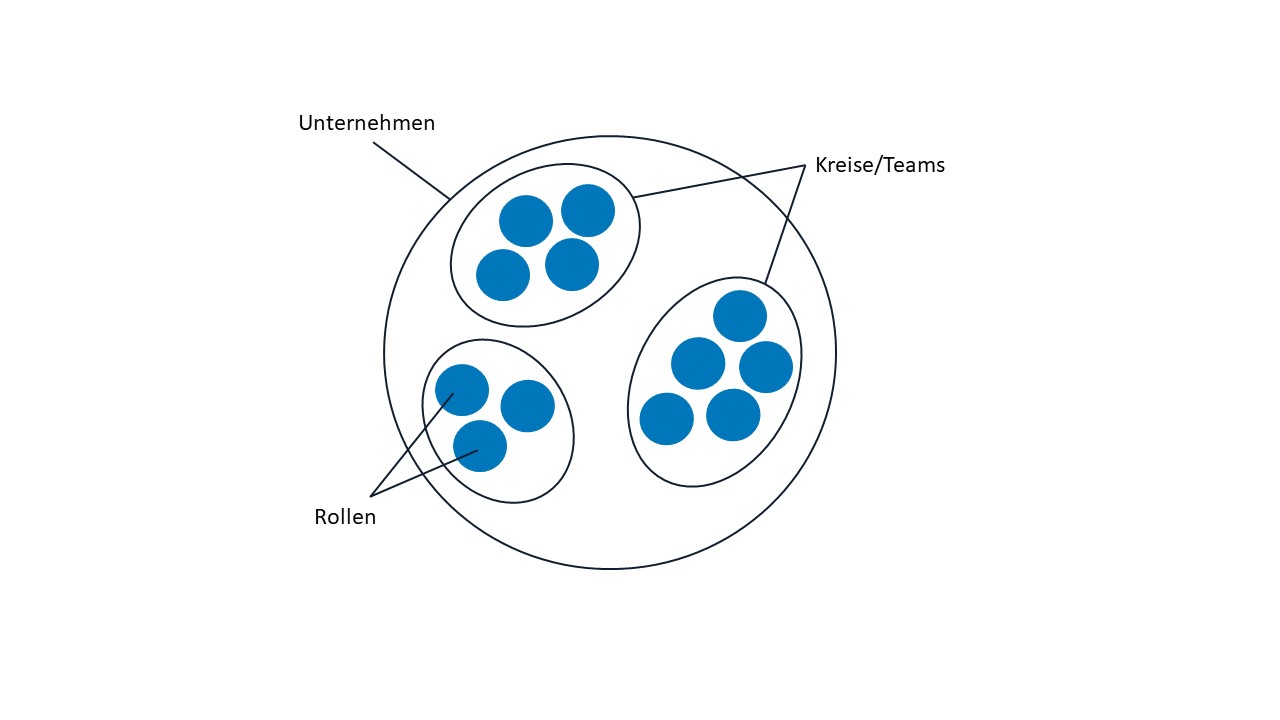What is Holacracy and how does it work?
Holacracy, or “holacracy” in German, describes a concept for one possible agile Organization of companies and their projects. The term was first introduced in 2007 Brian Robertson, the founder of Ternary Software. He developed Holacracy in his own company and successfully applied it himself. Holacracy can be used with two or more team members and is generally suitable for all industries.
What makes the concept special is that new definition of hierarchies, Distribution of tasks and decisions. The focus is on flat to non-existent hierarchies, so that all team members can communicate more directly Eye level encounter. Important decisions that affect the company are not made by a managing director or manager, but by the employees. Traditional management hierarchies are being replaced by self-organizing teams.
In order to be able to successfully implement this form of self-organization, it must be clearly defined in advance Rules and guidelines necessary to consistently track and achieve corporate goals. The emphasis is on this Trust and the individual responsibility the employees within the team. Depending on the project, a distinction is made between different roles and the circles based on them. (We will explain to you below how these are composed 😉)
What is important?
1. Replace traditional hierarchies with roles and circles
The previous, hierarchical structures will be replaced by defined responsibilities and areas of responsibility for work or tasks.
The work within a project or company is divided into different areas roll, instead of the usual positions and job descriptions. Every role haunts you specific purpose, which in turn is aligned with the company's goals. Goals and roles in holacracy are defined via defined responsibilities and the employees who hold these roles. A team member can take on and perform different roles at the same time.
The team members in their respective roles have the authorization to material resources, financial questions or other areas of their respective work areas. It is important that the Role descriptions remain flexible and changeable. For this purpose, they are regularly redefined and adjusted by the so-called circles. The single ones Circles (or: teams) arise from the roles that belong together and are similar to the familiar one work team. A circle can consist of two employees or ten.
Circles are also largely self-organizing: they eliminate roles that they no longer need for a process, develop further by creating new roles, or change the definitions and responsibilities of the respective roles. Since the roles are determined independently of the company's later executing employees, one needs-based distribution possible at any time.

2. Distinction between operational meetings and control meetings
In order to keep joint meetings and the associated exchange as efficient and at the same time transparent as possible, a clear separation between so-called operational meetings and steering meetings is necessary.
Operational meetings serve to generally reflect on everyday working life and the associated tasks. The role holders bring themselves up to date, check the progress of ongoing projects as well as any problems that may arise and exchange ideas about new projects or projects that need to be prioritized differently. Role holders are the members of a circle and represent their respective roles. However, this also happens at eye level, so there is no supervisor or role leader here either.
Steering meeting On the other hand, they serve to regulate responsibilities and decisions within a circle. Current work processes, structures and roles within the group will also be further developed and adapted
Tracking and controlling these decisions dynamically is an important factor. In order to achieve the best possible success for the company, elements of the projects must be changed or adjusted at any time if they have not been able to prove themselves in practice.
3. Clear communication and the greatest possible transparency
There must be clear and transparent communication between the different circles and roles at all times. In order to work together on problems or to give each other feedback, so-called double linking can be used.
At the Double linking Information, feedback or other relevant discussions are not passed on from top to bottom in the classic sense, but are exchanged primarily between all employees and those affected by a group or project.
It should be noted that especially with this very open form of communication no consensus must prevail regarding various decisions. Opinions or fears of individual team members are not enough to fundamentally stop a plan that has already been initiated or a process within a project. Only with fundamentally justified objections and evidence that a measure will definitely cause damage can it be stopped completely.
Benefits of Holacracy
The Holacracy concept brings various advantages for the entire company:
- Higher motivation through greater responsibility for individual employees in the work process. This gives everyone the chance to initiate change.
- Employees are encouraged and challenged. This increases it efficiency total.
- discharge the central coordination of management or business managers.
- Blockages or problems in projects can be resolved promptly by joining the team in a circle mutually regulated and supports. Through binding agreements and clearly communicated rules, tasks can be completed on time and as needed.
- possibility of one continuous development and adapting the work organization to new circumstances and demands from outside, with the various role holders deciding on the next steps and not a superior or managing director. This makes organizational development much more agile.
Challenges of Holacracy
In addition to the many advantages of Holacracy, there are also new challenges due to the changed work structures:
- Numerous Regulate form the basis for the free and flat structures of holacracy.
- The concept is for all industries, but not for all companies suitable. The introduction and implementation of Holacracy is considered very complex, so a competent introduction is absolutely necessary.
- Straight stock market-oriented companies often have a reporting structure (need for reporting) that cannot easily be broken down into roles and circles without hierarchies.
- The danger of informal hierarchy Despite all the openness, this is often still the case, especially at the beginning of the introduction.
Conclusion
Overall, Holacracy is a very exciting and, above all, modern approach to agile organizational forms. However, the concept is not equally suitable for all companies and organizations, as both the introduction and compliance with the rules can be very complex. However, this can be remedied by introducing sub-areas of holacracy, such as a quicker reaction to changes by creating circles or shorter authority channels. This gives individual employees more responsibility and decision-making opportunities without having to wait for the go-ahead from their superiors.
And, could you imagine Holacracy in your company?



